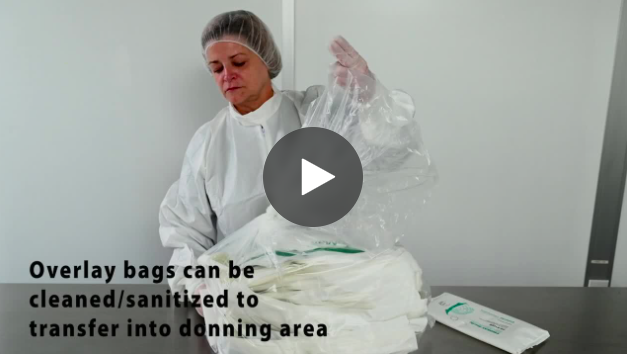By: Amy Zielenski & Jan Eudy
Regulations for Compounding Pharmacies
The last several years has brought about great attention and even scrutiny on compounding pharmacies and healthcare facilities. A regulatory spotlight has focused on how these trusted businesses protect the safety of their consumers, employees and the environment. While the guidelines that have existed for decades include recommendations and brief descriptions of suggested Personal Protective Equipment (PPE) to be used when handling hazardous drugs (HD), new soon to be published guidelines such as the “ASHP Guidelines on Handling Hazardous Drugs”, and the United States Pharmocepeial Convention (USP) General Chapter <800> – “Hazardous Drugs – Handling in Healthcare Settings” take the role of PPE even further. The need for best practices to mitigate the risk of exposure to hazardous drugs is now recognized at every point of the process of handling hazardous drugs, not only during the administering and compounding of the HD but also the manufacturing, receipt, storage, transport and disposal.
Traditional compounding pharmacies; those cited in Section 503a of the Federal Food, Drug and Cosmetic Act1 must comply with USP 795 “Pharmaceutical Compounding – Non-Sterile Preparations”2 for nonsterile applications; USP 797 “Pharmaceutical Compounding – Sterile Preparations”3 for sterile applications, and USP 800 “Hazardous Drugs – Handling in Healthcare Settings”4 when assessing Personal Protective Equipment for their applications. Those Compounding pharmacies doing large volume outsourcing as addressed in Section 503b of the Federal Food, Drug and Cosmetic Act5 also must follow Current Good Manufacturing Practice in Manufacturing, Processing, Packing, or Holding of Drugs; C.F.R. 21 §2106 and Current Good Manufacturing Practice for Finished Pharmaceuticals C.F.R. 21 §2117 in addition to the aforementioned USP standards.
What is Covered in USP 795?
For compounders doing non-sterile applications without any hazardous drugs the garment worn as PPE is really protecting the preparation being compounded and the clean environment. USP 795 provides limited information on the required garments but includes the use of hair covers, masks and gloves. Fortunately, the Institute for Environmental Sciences and Technology has published recommended practices for cleanroom garments. The IEST-RP-CC003.4 “Garment System Considerations for Cleanrooms and Other Controlled Environments” serves as a valuable resource for compounding pharmacies trying to meet PPE garment requirements in the USP standards.
Best gowning practices for a non-sterile clean compounding environment are to step onto sticky mats three times to clean shoes prior to entering the clean environment and donning shoe covers over street shoes. Hair covers, also known as bouffants, are used to capture all hair, thorough hand cleansing prior to wearing non-sterile powder-free gloves is required, and a clean-manufactured, single-use consumable cleanroom frock. It is important to note, that there are industrial versions and cleanroom versions of garments. Bouffants should be cleanroom bouffants designed to reduce linting and shedding, and the same is true for the masks. Masks and bouffants should be cleanroom compatible and packaged in plastic – not cardboard to reduce potential contaminants. Frocks should be clean manufactured, with bound seams and a zipper front to reduce the potential of viable and nonviable particle breakthrough from the wearer. A quality garment will meet IEST-RP-CC003.4 Category I Particle Cleanliness and not introduce a heavy particle load into the clean environment when worn. The disposable garments should be individually packaged to prevent contamination during the storing and donning process.
What is Covered in USP 800?
A portion of USP 800 specifically addresses the PPE required when working with hazardous drugs. However, it is the responsibility of the pharmacies and health care facilities to perform their own risk assessment based upon the HDs they work with. IEST-RP-CC003.4 can provide guidance to the designated professional tasked with instituting the correct PPE as part of the safety program required when handling HDs. The IEST Recommended Practice CC003.4 document recommends that when selecting disposable, single use cleanroom garments for your specific application, one should evaluate the garments for:
- Viable and non-viable particle cleanliness
- Electrostatic properties
- Durability
- Comfort
- Opacity
- Particle filtration efficiency
- Microbial penetration
- Chemical compatibility
- Fluid Resistance
The American Society for Testing and Materials has a standard for testing chemotherapy gloves (ASTMD-6978-05) (2013) that is specific to chemotherapy drugs and duration of exposure. Currently, no such standard for permeation of hazardous drugs on cleanroom garments exists. However, USP 800 states that PPE garments should resist permeability of HDs and that cloth coats, surgical scrubs, isolation gowns or other absorbent materials are not appropriate protective outerwear.4 This includes high density polyester cleanroom garments provided by cleanroom laundries.
The IEST document can also help clarify the best garment for the individual application by outlining the type of nonwoven fabrics that cleanroom PPE may be constructed with:
- Spunbonded or thermal bond
- Flash spun
- Melt blown
- Spunbonded/melt blow/ spunbonded (SMS)
- Film laminate
- Microporous film laminate8
The IEST-RP-CC003.4 identifies standard tests to be performed to assess the different properties of the fabrics. This IEST document also recommends the types of thread and seams used in construction of cleanroom garments. Seam construction is an important consideration in the selection of cleanroom garments for use with HDs. It is recommended that all disposable, single-use cleanroom garments have bound seams to protect the wearer from strikethrough and permeation at the seams.4 However, many disposable garments used in cleanrooms are manufactured with serged seams; therefore, putting the wearer at risk for exposure. Bound seams also help the garment to be low-linting and not contribute to the environmental particle count when worn.
USP 797 sets the standards for sterile compounding and mandates that all compounding must be performed in an ISO Class 5 environment and suggests an ISO Class 7 buffer area and ISO Class 7 ante area.3 In Appendix A of the IEST-RP-CC003.4 the recommended garment configurations for different class cleanrooms are outlined (table below).8 Garment system configurations must be evaluated for the room or compounding area cleanliness that each operation is expected to achieve.
| Air Cleanliness Classes of ISO 14644-11 | ||||||||
| Apparel Type | ISO 8 (m 6.5 OR 100,000) | ISO 7 (M 5.5 or 10,000) | ISO 6 (M 4.5 OR 1,000) | ISO 5 (M 3.5 OR 100) | ISO 5 (M 3.5 OR 100) FOR ASEPTIC | ISO 4 (M 2.5 OR 10) | ISO 3 (M 1.5 OR 1) | ISO CLASS 1 AND ISO CLASS 2 |
| Inner Suit | AS | AS | AS | R | AS | R | R | R |
| Hair Cover (Bouffant) | R | R | R | R | R | R | R | AS |
| Woven Gloves | AS | AS | AS | AS | NR | NR | NR | NR |
| Barrier Gloves | AS | AS | AS | AS | R | R | R | R |
| Facial Cover | AS | AS | AS | R | R | R | R | R |
| Hood | AS | AS | AS | R | R | R | R | AS |
| Powered Headgear | AS | AS | AS | AS | AS | AS | AS | R |
| Frock | R | R | AS | AS | NR | NR | NR | NR |
| Coverall | AS | AS | R | R | R | R | R | R |
| 2 Piece Suit | AS | AS | AS | AS | NR | NR | NR | NR |
| Shoe Cover | R | R | AS | AS | NR | NR | NR | NR |
| Boot | AS | AS | R | R | R | R | R | R |
| Special Footwear | AS | AS | AS | AS | AS | AS | AS | AS |
| Typical Frequency of Change2 | 2X/WEEK | 2X/WEEK | 3X/WEEK | 1X/DAY | PER ENTRY | PER ENTRY | PER ENTRY | PER ENTRY |
| 1For correlation of ISO air cleanliness classes to the former FED-STD-209 classes, refer to Table 1 in this document.
2Consideration should be given to the effects of season conditions in some geographical areas. Note that the suggestions made are not based on scientific data but instead reflect the collective experience offered by the working group. Individual requirements for change frequency should be determined on a case-by-case basis. R = Recommended NR = Not Recommended AS = Application Specific |
||||||||
Once the engineering controls have been determined and the environmental classification in the containment-primary engineering control (C-PEC), e.g. the cabinet in which the compounding is performed, and the containment-secondary engineering control (C-SEC), e.g. the room in which the C-PEC is located9; the proper level of PPE cleanroom gowning can be determined for use in the compounding of sterile hazardous drugs. However, USP 797 specifies that compounding garments must include the following: dedicated shoes or shoe covers, face masks, head and facial hair covers (e.g., beard covers in addition to face masks), a no shedding gown with sleeves that fit snugly around the wrists and is enclosed at the neck, and sterile powder-free gloves. The word “no shedding” is troubling because no such gown exists. There are low-linting cleanroom gowns and clean-manufactured cleanroom gowns that help ensure no additional contamination from the gown itself, but a “nonshedding” gown does not exist. Again, the packaging of the required garments plays an important role in maintaining a clean environment, when cardboard is used in the packaging of gloves, bouffants and masks it is an indicator that the items are not truly clean.
Selecting Cleanroom Apparel
Ideally the disposable cleanroom garments chosen will satisfy all the primary requirements of the standards for handling sterile hazardous drugs: 1. satisfy the PPE requirements to protect the worker from exposure to HDs; 2. have a validated Sterility Assurance Level of 10-6; and 3. act as a barrier to entrap any shedding of human skin, hair cells, bodily fluids and the deposition of mucus or respiratory residue into the compounding area. The same style gown can then be worn for sterile compounding and sterile compounding of HDs. The ideal cleanroom garment will have a long permeation rate and high filtration efficiency rate of 99.999%. At this point, it is important to differentiate between clean sterile garments and sterile garments. Sterility does not mean the garment is free of particulate. Unfortunately, many sterile cleanroom garments are not clean manufactured and can have a large amount of particulate contamination. Sterile garments used in ISO Class 5 environments should meet the IEST Category I Particle Cleanliness standard so they do qualify as low-linting.
Employees performing compounding with HDs and/or in aseptic environments will have to demonstrate competency in donning and doffing the garments.3 The fold and packaging of sterile PPE should be part of the decision-making process when choosing a sterile garment. Look for packaging that is easy to handle and disinfect; and look for garment folds that support minimal handling of the garment during the donning process to reduce the potential of contamination caused by wearer error. The responsible party will want to make sure the packaging of the gowning supports the requirements of not only the sterile room classification, but also the buffering and ante areas that the garments must pass through to be staged for gowning.
Larger compounding pharmacies that qualify as 503b outsourcing facilities are regulated by the FDA to meet Current Good Manufacturing Practice in Manufacturing, Processing, Packing, or Holding of Drugs; C.F.R. 21 §210 and Current Good Manufacturing Practice for Finished Pharmaceuticals C.F.R. 21 §211 along with the appropriate USP 795, USP 797, and USP 800 based upon the type of compounding being performed. Outsourcing compounding facilities are responsible for minimizing particulate contaminates in clean areas where components, formulated products, in process materials, equipment and contained closures are prepared, held or transferred.6,7 In addition, the microbial content of articles and components that are subsequently sterilized should be controlled. It is critical that pharmacies utilize clean sterile garments in the main cleanroom; and evaluate the best garments to control the potential exposure to hazardous drugs throughout the entire manufacturing process to help meet these new mandates.
In all compounding pharmacy cleanroom applications, whether sterile or non-sterile, hazardous drugs or not, when disposable cleanroom garments are worn and the operators must comply with strict adherence to the company’s standard operation procedures for donning and doffing the cleanroom garments. Good gowning protocol will also include the repeat sanitation of hands, wiping of packages and surface areas along with controlled behaviors in the cleanroom and cleaning the cleanroom. If the operators fail to conform to the company’s standard operating procedures, the cleanrooms will be compromised which may compromise the safety of the employees, the product and/or the process, and ultimately the consumer.
The compounding pharmacist is potentially exposed to chemicals through ocular, inhalation and dermal avenues. In addition to containment devices as engineering controls, PPE is critical in keeping the pharmacist safe. Since the human body produces contaminants in such large quantities, the cleanroom garments may become overwhelmed if worn for extended periods of time and its performance integrity compromised. It is recommended that garments be changed out immediately if they become wet or exposed to a spill. It is also recommended to change all PPE especially gowns, face mask and gloves every two hours maximum.4
The intent of the expanded regulations and guidelines is to offer a greater level of protection and lower the probability of cross contamination. It will take due diligence on the part of the responsible parties to ensure the proper garment, with the proper construction and attributes is chosen. Do not be complacent by utilizing legacy brands and relying on familiarity with a common fabric. It does not guarantee an appropriate choice in PPE for your pharmacy’s specific applications or for meeting current and pending regulations.
References:
- FD&C Act. Federal Food, Drug and Cosmetic Act. Section 503(a) 1997.
- USP <795> Pharmaceutical compounding – nonsterile preparations. Pharmacopeial Forum (PF) 44(3). May – Jun. 2018
- USP <797> Pharmaceutical compounding – sterile preparations. Pharmacopeial Forum (PF) 44(5). Sept – Oct. 2018.
- USP <800> Hazardous drugs – Handling in Healthcare Settings. USP 40 – NF 35. Second Supplement. 2017
- FD&C Act. Federal Food, Drug and Cosmetic Act. Section 503(b) 2013.
- E-CFR. Code of Federal Regulations. Current Good Manufacturing Practice in Manufacturing, Processing, Packing, or Holding of Drugs; Title 21 F.R. Part 11 §210. November 2018.
- E-CFR. Code of Federal Regulations. Current Good Manufacturing Practice for Finished Pharmaceuticals; Title 21 F.R. Part 11 §210. November 2018.
- IEST-RP-CC003.4 “Garment System Considerations for Cleanrooms and Other Controlled Environments”. 2008
- Controlled Environment Testing Association. Certification Guide for Sterile Compounding Facilities CAG-003-2006.
About the Authors:
Amy Cianfichi Zielenski is the Cleanroom Business Unit Manager for Lakeland Industries, and heads the CleanMax Cleanroom Garment Division. She has been employed in the cleanroom garment industry for over 18 years. Ms. Zielenski can be reached at aczielenski@lakeland.com
Jan Eudy is a cleanroom and contamination control consultant at Jan E. Eudy Consulting with 30+ years of experience. She is a Fellow and President-Emeritus of the IEST, a Registered Microbiologist with the National Registry for Microbiologists and a Certified Quality Auditor with the American Society for Quality. Ms. Eudy can be reached at janeudy@gmail.com


